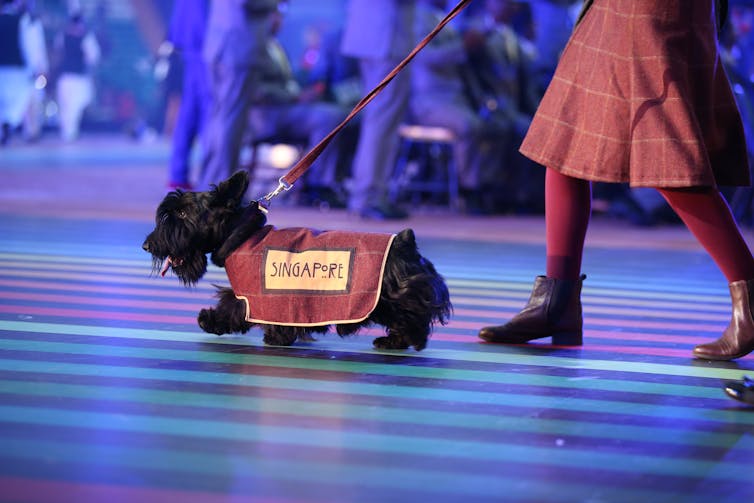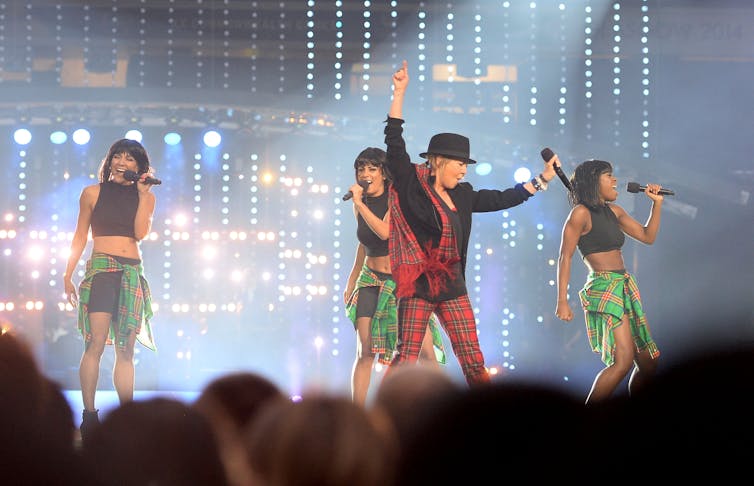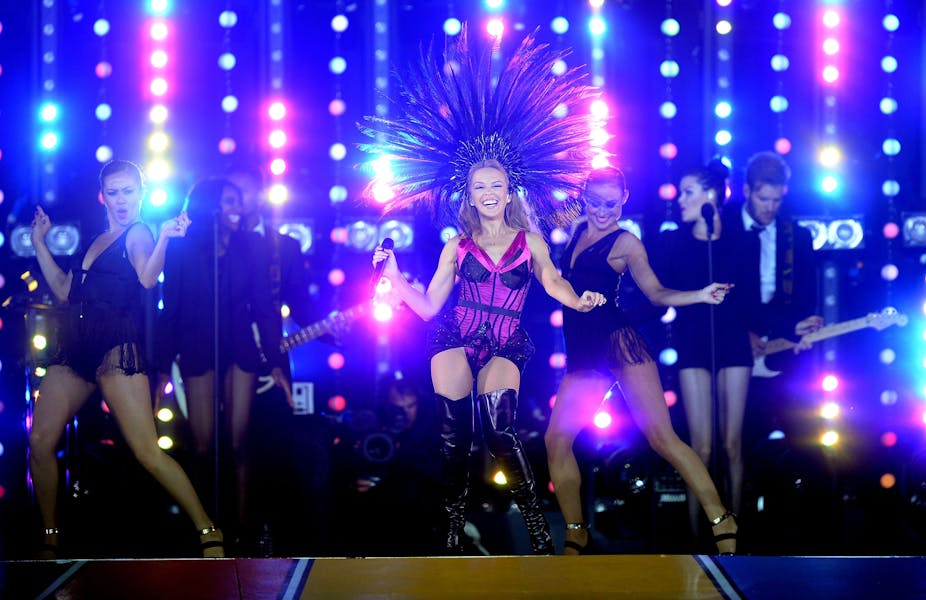I hope you didn’t sleep through or otherwise avoid the closing ceremony of the Glasgow 2014 Commonwealth Games, especially its Gold Coast 2018 handover component.
If so, you surely missed a production marking “a pivotal time in the psyche of the people of Australia”, according to Nigel Chamier, chairman of the Gold Coast 2018 Commonwealth Games Corporation (GOLDOC).
But as the Gold Coast grabbed its moment in Glasgow’s Hampden Park Stadium floodlights – and Australian steeplechaser Genevieve LaCaze pulled off a cheeky stage bomb – Scotland had one final shot at representing itself to the world.
The opening ceremony had offered a large diet of potted Scotlandia, including a giant kilt, the Loch Ness Monster, Rod Stewart, tea cakes, shipbuilding, bagpipes, Susan Boyle, acres of tartan, a hyper-inflated haggis and Scottie dogs. It also embraced UNICEF and same-sex relationships.
How, then, to follow a show that had received reviews ranging from “a hideous embarrassment” to “a spectacular success” in rival Scottish newspapers?
History of spectacle
Grand sporting ceremonies tend to polarise their audiences, especially those from the host city/nation. Reportedly, when Glasgow 2014 head of ceremonies David Zolkwer went the democratic route and invited lists from Scots detailing which national icons should be in and out of the opening ceremony, he found that the lists were essentially identical.

In this symbolic battleground, the strongest defence is to claim to be “ironic”.
A messy mixture of the clichéd, the serious, the commercial and the kitsch, such ceremonies are never going to please the high-minded, while quirky cultural in-jokes pioneered at the Sydney 2000 Olympic ceremonies, and knowingly adopted at the London 2012 Olympics and in Glasgow, tend to produce quizzical looks among the uninitiated.
The overwhelming imperative is to be spectacular, to chew up a lot of broadcast time, generate big global audiences (estimated at more than a billion for both the Glasgow opening and closing ceremonies) and attract interest to the sport and location.
But ceremonies are also required to make a statement about the hosts and, through the handover, about their successors.
Mixed messages
So what did the Glasgow closing ceremony say about Scotland today? Well, there were successful pop acts of longstanding Lulu and Deacon Blue, more massed tartan and bagpipes, and London-based Australian Kylie Minogue, the latter to the chagrin of locals wanting someone from the “Toon” and who felt that there was “too much Oz and not enough Scot”.

But it did end proceedings with a karaoke-like rendition of Rabbie Burns’s quintessential Scottish song of loss and yearning, Auld Lang Syne.
And what of Australia’s 13-minute cameo? Despite their brevity, such performances are fraught with danger, as producer Ric Birch found with the Atlanta 1996 Olympic handover to Sydney (especially its use of inflatable kangaroos and other fake fauna) being roundly criticised by then-New South Wales premier Bob Carr, who felt that: “we can do better than that and we have enough creative people to devise images and symbols that promote us in a more impressive light.”
The event production company, David Atkins Enterprises, has some serious credentials to handle the passing of the proverbial baton from Glasgow to the Gold Coast.
Among the ceremonies that artistic director Atkins and crew have given to the world are:
- Sydney 2000 and Vancouver 2010 Olympics
- New Zealand 2011 Rugby World Cup
- Doha 2006 Asian Games
- Doha 2011 12th Arab Games
- Shanghai 2010 Expo.
He also directed the handover from Manchester to Melbourne at the 2002 Commonwealth Games.
Having once been responsible for artistic direction of Channel Nine’s Hey Hey It’s Saturday, Atkins could be expected to have intimate knowledge of the Australian cultural vernacular. The more parochial Queenslander, though, may have questioned charging a Sydneysider with the task of showing the Gold Coast in its best light.
Singer Jessica Mauboy, surfer Mick Fanning, Australian team captain Sally Pearson, Gold Coast locals and dancer-actors fronted what was essentially a glossy tourism promotion. This was not surprising as Tourism Australia, Tourism and Events Queensland, Gold Coast Tourism and the City of Gold Coast all helped develop the brief for the handover segment.
Viewers looking for a more intricate tapestry, such as evocations of outlaw bikie gangs and dredging around the Great Barrier Reef, would have been disappointed.
The only disruption to choreographed proceedings came later with LaCaze’s uninvited performance among the topless male dancers while “our Kylie” (as she was called by Australian commentators) was switching costumes.
As “pivotal times in the psyche of the people of Australia” go, this larrikin act seemed to lodge more in the national consciousness – certainly among its media – than the handover’s images of sea, sand and skyscrapers on the Gold Coast.

